 W
WThe Cultural Revolution, formally the Great Proletarian Cultural Revolution, was a sociopolitical movement in China from 1966 until 1976. Launched by Mao Zedong, Chairman of the Communist Party of China, its stated goal was to preserve Chinese Communism by purging remnants of capitalist and traditional elements from Chinese society, and to re-impose Mao Zedong Thought as the dominant ideology in the CCP. The Revolution marked Mao's return to the central position of power in China after a period of less radical leadership to recover from the failures of the Great Leap Forward, which led to approximately 30 million deaths in the Great Chinese Famine only five years prior.
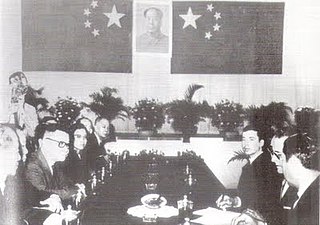 W
WThe 12-3 incident refers to a political demonstrations and rioting against Portuguese rule in Macau that occurred on 3 December 1966. The incident, inspired by the Cultural Revolution in the People's Republic of China, occurred in direct response to a violent police crackdown against Chinese protestors demonstrating against corruption and colonialism in Macau. The incident is known as "12-3", in reference to the date of the riots. Pressured by business leaders in Macau and the mainland Chinese government, the colonial government agreed to meet the demands of the protestors and apologized for the police crackdown. Portuguese sovereignty over Macau diminished after the incident, leading to de facto Chinese control over the territory.
 W
WThe 1967 Hong Kong riots were large-scale riots between pro-communists and their sympathisers, and the Hong Kong government, which took place against the backdrop of the Cultural Revolution in China. While originating as a minor labour dispute, the tensions later grew into large scale demonstrations against British colonial rule. Demonstrators clashed violently with the Hong Kong Police Force. Motivated by events in the People's Republic of China, demonstrators called for massive strikes and organised demonstrations, while the police stormed many of the demonstrators' strongholds and placed their active leaders under arrest. The colonial government banned Communist publications and closed Communist schools alleged to be bomb-making factories. Several pro-Beijing protesters were beaten to death by police, and some members of the press who voiced their opposition to the demonstrators' cause were murdered.
 W
WBarefoot doctors were farmers, folk healers, rural healthcare providers, and recent middle or secondary school graduates who received minimal basic medical and paramedical training and worked in rural villages in China. Their purpose was to bring healthcare to rural areas where urban-trained doctors would not settle. They promoted basic hygiene, preventive healthcare, and family planning and treated common illnesses. The name comes from southern farmers, who would often work barefoot in the rice paddies, and simultaneously worked as medical practitioners.
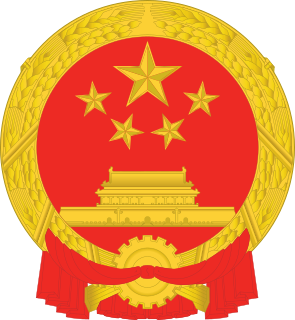 W
WThe Beijing Spring refers to a brief period of political liberalization during the "Boluan Fanzheng" period in the People's Republic of China (PRC). It began as the Democracy Wall movement in Beijing, which occurred in 1978 and 1979, right after the end of the Chinese Cultural Revolution. The name is derived from "Prague Spring", an analogous event which occurred in Czechoslovakia in 1968.
 W
WBoluan Fanzheng or Poluan Fancheng, literally meaning "eliminating chaos and returning to normal", was a period in the history of People's Republic of China during which Deng Xiaoping, then paramount leader of China, led a far-reaching program attempting to correct the mistakes of the Cultural Revolution launched by Mao Zedong. The program gradually dismantled the Maoist policies associated with the Cultural Revolution, rehabilitated millions of victims who were persecuted during the Revolution, initiated various sociopolitical reforms, and brought the country back to order in a systematic way. The Boluan Fanzheng period is regarded as an important transition period in China's history, which served as the bedrock of the historic Reform and Opening-up program starting in December 1978.
 W
WChairman Mao badge is the name given to a type of pin badge displaying an image of Mao Zedong that was ubiquitous in the People's Republic of China during the active phase of the Cultural Revolution, from 1966 to 1971. The term is also used for badges associated with Mao that do not actually have a picture of him on them. It is estimated that several billion Chairman Mao badges were produced during the period of the Cultural Revolution.
 W
WChinese Shadows is a book written by Simon Leys, which is the pseudonym for Belgian Sinologist Pierre Ryckmans. It was originally published in the French language in 1974 under the title Ombres chinoises, and was then translated into English in 1977. The book is about Leys' six-month stay in China, which he made in 1972. Leys discusses the cultural and political destruction of the People's Republic of China by Mao Zedong, who was the chairman of the Communist Party of China at the time. He wrote under a pseudonym since, like other academics and journalists who refrained from criticizing China, he did not want to be barred from future visits to Peking.
 W
WThe Criticize Lin (Biao), Criticize Confucius Campaign was a political propaganda campaign started by Mao Zedong and his wife, Jiang Qing, the leader of the Gang of Four. It lasted from 1973 until the end of the Cultural Revolution, in 1976. The campaign produced detailed Maoist interpretations of Chinese history, and was used as a tool by the Gang of Four to attack their enemies.
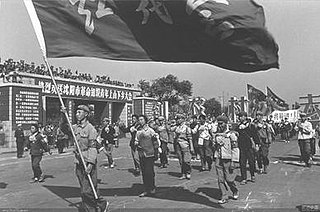 W
WThe Up to the Mountains and Down to the Countryside Movement, often known simply as the Down to the Countryside Movement, was a policy instituted in the People's Republic of China in the late 1960s and early 1970s. As a result of what he perceived to be pro-bourgeois thinking prevalent during the Cultural Revolution, Chairman Mao Zedong declared certain privileged urban youth would be sent to mountainous areas or farming villages to learn from the workers and farmers there. In total, approximately 17 million youth were sent to rural areas as a result of the movement.
 W
W"The East Is Red" is a Chinese revolutionary song that was the de facto national anthem of the People's Republic of China during the Cultural Revolution in the 1960s. The lyrics of the song were attributed to Li Youyuan (李有源), a farmer from Shaanbei, and the melody was derived from a local peasant love song from the Loess Plateau entitled "Bai Ma Diao" 《白马调》, also known as "Zhima You" 《芝麻油》, which was widely circulated in the area around Yan'an in the 1930s. He allegedly got his inspiration upon seeing the rising sun in the morning of a sunny day.
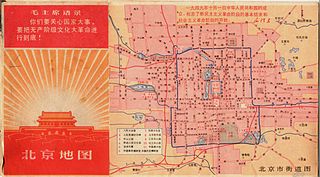 W
WThe Four Olds or the Four Old Things was a term used during the Cultural Revolution by the Red Guards in the People's Republic of China in reference to the pre-communist elements of Chinese culture they attempted to destroy. The Four Olds were: Old Ideas, Old Culture, Old Habits, and Old Customs. The campaign to destroy the Four Olds began in Beijing on August 19, 1966, shortly after the launch of the Cultural Revolution.
 W
WThe Gang of Four was a political faction composed of four Chinese Communist Party officials. They came to prominence during the Cultural Revolution (1966–76) and were later charged with a series of treasonous crimes. The gang's leading figure was Jiang Qing. The other members were Zhang Chunqiao, Yao Wenyuan, and Wang Hongwen.
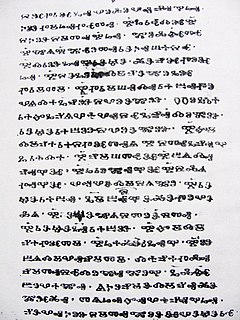 W
WThe Glagolitic script is the oldest known Slavic alphabet. It is generally agreed to have been created in the 9th century by Saint Cyril, a monk from Thessaloniki. He and his brother, Saint Methodius, were sent by the Byzantine Emperor Michael III in 863 to Great Moravia to spread Christianity among the West Slavs in the area. The brothers decided to translate liturgical books into the contemporary Slavic language understandable to the general population. As the words of that language could not be easily written by using either the Greek or Latin alphabets, Cyril decided to invent a new script, Glagolitic, which he based on the local dialect of the Slavic or Thracian tribes from the Byzantine theme of Thessalonica.
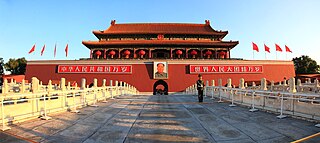 W
W"I Love Beijing Tiananmen", formerly translated as "I love Peking Tiananmen", is a children's song written during the Cultural Revolution era of China.
 W
WThe Pargo Kaling was a large chorten straddling across the road leading from Drepung between the Potala's Red Hill (Marpori) and the Iron Hill (Chagpori) at Lhasa, Tibet, and containing a through-passage or archway for people and animals. It formed the "Western Gate" of the city and led into the village of Shol. It was destroyed during the Great Proletarian Cultural Revolution in 1967, but the Lhasa authorities had it rebuilt in 1995.
 W
WProject 571 was the numeric codename given to an alleged plot to execute a coup d'état against Chinese leader Mao Zedong in 1971 by the supporters of Lin Biao, then Vice-Chairman of the Communist Party of China. In Chinese, the numbers "5-7-1" sound like the term "armed uprising". The Chinese government initially claimed that Lin Biao himself had devised Project 571, but evidence inside and outside of China has made it more likely that Lin's son, Lin Liguo, a high-ranking officer in the People's Liberation Army Air Force, instead developed the plot. Any plots that may have been planned or attempted by Lin Biao or his family ultimately failed. Lin's family attempted to flee China for the Soviet Union, but died when their plane crashed over Mongolia on September 13, 1971. A draft copy of the Project 571 Outline was discovered following Lin's death, and was publicly circulated by the Chinese government as a means of explaining the event.
 W
WQincheng Prison is a maximum-security prison located in the Changping District, Beijing in the People's Republic of China, near Xiaotangshan. The prison was built in 1958 with aid from the Soviet Union and is the only prison belonging to China's Ministry of Public Security. The Ministry of Justice operates other prisons.
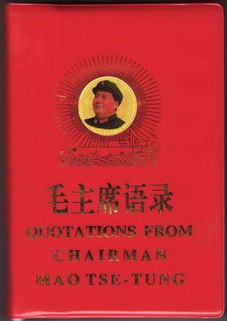 W
WQuotations from Chairman Mao Tse-tung is a book of statements from speeches and writings by Mao Zedong, the former Chairman of the Communist Party of China, published from 1964 to about 1976 and widely distributed during the Cultural Revolution.
 W
WThe Red Flag was a theoretical political journal published by the Chinese Communist Party. It was one of the "Two Newspapers and One Magazine"(两报一刊) during the 1960s and 1970s. The newspapers were People's Daily and Guangming Daily. People's Liberation Army Daily is also regarded as one of them.
 W
WRed Guards was a mass student-led paramilitary social movement mobilized and guided by Chairman Mao Zedong in 1966 through 1967, during the first phase of the Chinese Cultural Revolution, which he had instituted. According to a Red Guard leader, the movement's aims were as follows:Chairman Mao has defined our future as an armed revolutionary youth organization.... So if Chairman Mao is our Red-Commander-in-Chief and we are his Red Guards, who can stop us? First we will make China Maoist from inside out and then we will help the working people of other countries make the world red...and then the whole universe.
 W
WThe Ruijin Massacre was a series of massacres that took place in Ruijin and nearby counties in Jiangxi Province during the Chinese Cultural Revolution. From September 23 to early October, 1968, over 1,000 people were killed in the Ruijin Massacre; specifically, over 300 people were killed in Ruijin County, around 270 were killed in Xingguo County, and over 500 in Yudu County.
 W
WThe seizure of power, or power-seizure movement during the Chinese Cultural Revolution was a series of events led by the "rebel groups (造反派)", attempting to grab power from the local governments in China and local branches of the Chinese Communist Party (CCP). The seizure of power began in the "January Storm" of Shanghai in 1967, and rapidly spread to other areas of China. The power seizure usually culminated in the establishment of local revolutionary committees, which replaced the original governments as well as communist party branches, and wielded enormous power that often caused much chaos in the Chinese society.
 W
WThe Shaoyang County Massacre, also known as the "Black Killing Wind" Incident, was a massacre in Shaoyang County of Hunan Province during the Chinese Cultural Revolution. According to the official statistics in 1974, from July to September of 1968, a total of 11,177 people were arrested with 7,781 imprisoned and 113 permanently disabled, while the death toll of the massacre was 991, including 699 who were forced to commit suicide. However, some researchers argue that thousands of people died in the massacre.
 W
WShen Yinmo was a Chinese poet and calligrapher.
 W
WThe Shigatse Dzong, also known as Samdruptse Dzong, is located in Shigatse, Tibet, China. It is spelt Rikaze Dzong.
 W
WStruggle sessions were a form of public humiliation and torture used by the Chinese Communist Party (CCP) at various times in the Mao era, particularly during the years immediately before and after the establishment of the People's Republic of China (PRC) and during the Cultural Revolution. The aim of struggle sessions was to shape public opinion, as well as to humiliate, persecute, or execute political rivals and those deemed class enemies.
 W
WThe Tiananmen Incident was a mass gathering and protest that took place on 5 April 1976, at Tiananmen Square in Beijing, China. The incident occurred on the traditional day of mourning, the Qingming Festival, after the Nanjing Incident, and was triggered by the death of Premier Zhou Enlai earlier that year. Some people strongly disapproved of the removal of the displays of mourning, and began gathering in the Square to protest against the central authorities, then largely under the auspices of the Gang of Four, who ordered the Square to be cleared.
 W
W"To the Rear of the Enemy", also translated as To Go Behind Enemy Lines, is a Chinese patriotic song written in 1938 by Zhao Qihai. The song was a popular melody during the Second Sino-Japanese War, where it was used by numerous guerilla groups and gained popularity as a resistance song against the Japanese.
 W
WThe Whole Country is Red is a Chinese postage stamp, issued on 24 November 1968, which contained a problem with the design. The stamp features a map of China with the words "The Whole Country is Red", with a worker, farmer, and soldier standing below with copies of Quotations from Chairman Mao, but Taiwan is not shaded red. The face value of the stamp is 8 fen.
 W
WThe Wuhan incident was an armed conflict in the People's Republic of China between two hostile groups who were fighting for control over the city of Wuhan in July 1967, at the height of the Cultural Revolution. The two opposing forces were the "Million Heroes" and the "Wuhan Workers' General Headquarters". The former, numbering about 500,000 people, comprised mainly skilled workers, state and local party employees, and were supported by the local PLA, led by the commander of Wuhan Military Region, General Chen Zaidao. The "Wuhan Workers' General Headquarters", also numbering close to 500,000 people, comprised mostly workers and students from Red Guard organizations.
 W
WThe Yangjiang Massacre was a series of massacres that took place in Yangjiang, Guangdong during the Chinese Cultural Revolution. According to the branch of the Communist Party of China (CPC) in Yangjiang, a total of at least 3,573 people died in the Yangjiang Massacre. Specifically, the massacre in Yangjiang County took place from January 1, 1968, to mid-January 1969, killing 909 people, while the massacre in Yangchun County began on September 23, 1967, killing 2,664 people after all. During the massacre, methods of slaughter included beating with hoes or clubs, gun shooting, drowning, stabbing, stoning, exploding with fireworks, burning with kerosene, live burial, and so on.
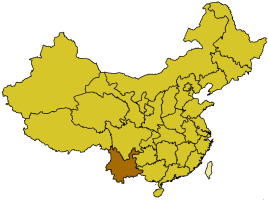 W
WThe Zhao Jianmin Spy Case, or Zhao Jianmin Wrong Case, was a major fabricated spy case in Yunnan province during the Chinese Cultural Revolution, with more than 1.387 million people implicated and persecuted, which accounted for 6% of the total population in Yunnan at the time. From 1968–1969, more than 17,000 people died in massacre while 61,000 people were crippled for life; in Kunming alone, 1,473 people were killed and 9,661 people were disabled.